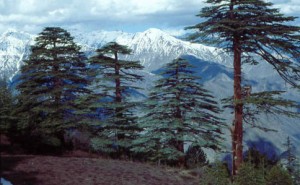Kalash Valley: Where Fairies Dance and Sing
Wednesday, March 28th, 2012 10:56:16 by Naveed A Bari
Kalash Valley: Where Fairies Dance and Sing
Obscured by high mountains and treacherous muddy tracks, there live a people up in the north of Pakistan, who do not even know who they are or from where they came to live a life of isolation – yet maintain and protect their beliefs, their ideology and way
of living. Their ancestry is enveloped in mystery and has always remained a subject of controversy. A legend says that five soldiers of the legions of Alexander of Macedonia settled in Chitral and are the progenitors of the Kafir-Kalash.
One can still find similarities between the sports and games (specially the wrestling and shot-put style with those practiced in the ancient Olympics. Their features are not local and are thought to resemble those of the South-European characteristics. Some
even find their influence of Greek music in Kalash music. Alexander the Great when encountered Kalash, he is said to have remarked that he encountered strange wooden boxes, which his troops chopped up to be used as firewood.
These "boxes" were actually coffins for their dead following the custom which the Kalash Kafirs of Chitral still have of leaving their dead outside in wooden coffins. He also described them as a light skinned race of European type people, which is exactly
what they are. Kalash ruled over the areas now part of the Chitral Valley and neighbouring Afghanistan for three centuries (1200-1400AD). Remnants and ruins of Kalash forts can still be seen Uchusht and Asheret . The famous bridge over Chitral River known
as Chee Bridge was also built by a Kalash ruler. The names of Bala Sing, Razhawai and Nagar Shao are still alive in the folklore of Chitral. They were the most prominent among the eight Kalash Kings.
Rudyard Kipling’s "The Man Who Would Be King" is purported to be in the Kafir Kalash Valleys. In the late 19th century the present day Kalash Valley was known as Kafiristan — Land of the Infidels — and extended to several valleys in present day Afghanistan.
However, the inhabitants of the Afghan Kafir valleys were forcibly converted to Islam, leaving only the tribes of the three valleys of Rambur Bumburet and Birir to carry on their centuries-old animistic culture.
In order to conserve this primitive pagan tribe and to protect their distinctive identity, unparalleled in the world, the Government of Pakistan has officially forbidden anybody from trying to convert these tribes to another religion.
The temperature of Kalash is very pleasant in summers and the best time to visit is between May and September if someone is planning a visit by road. For those using air links, one can extend it by another two months. The maximum temperature of Kalash valley
in summers is between 23°C to 27°C and the mean minimum temperature is between 2°C to 1°C.
In winters, the entire region in general and Kalash Valley in particular comes in the grip of cold northerly winds. The extreme minimum temperatures recorded in the valleys have been -4.8°C to -15°C for the month of January and February. The valley gets
rainfall between 700mm to 800mm. From December to March occasionally even later, snowfall is quite frequent Kalash valley.
Short URL: https://www.newspakistan.pk/?p=17398

















